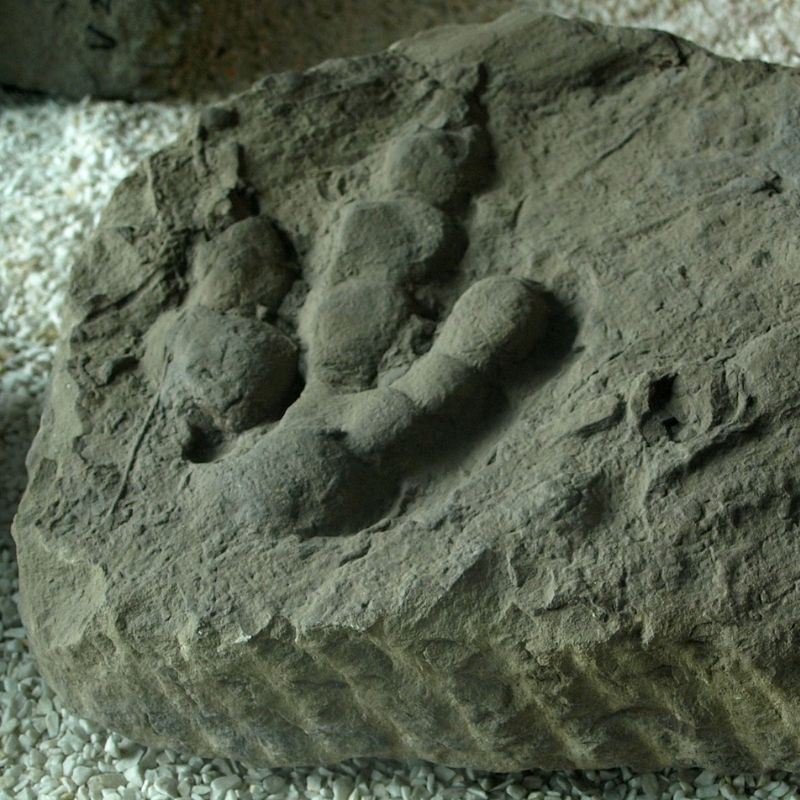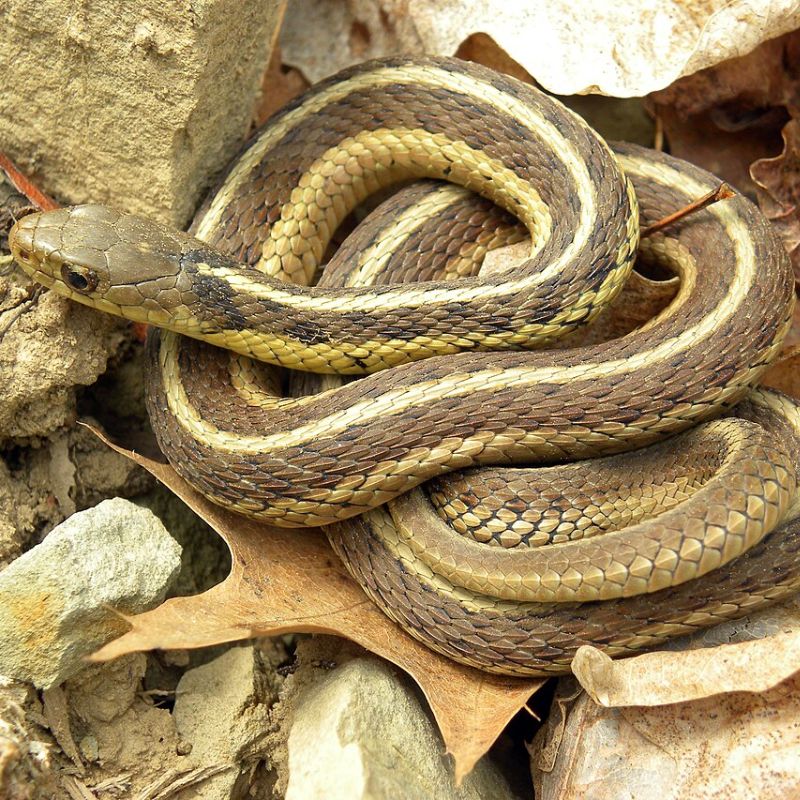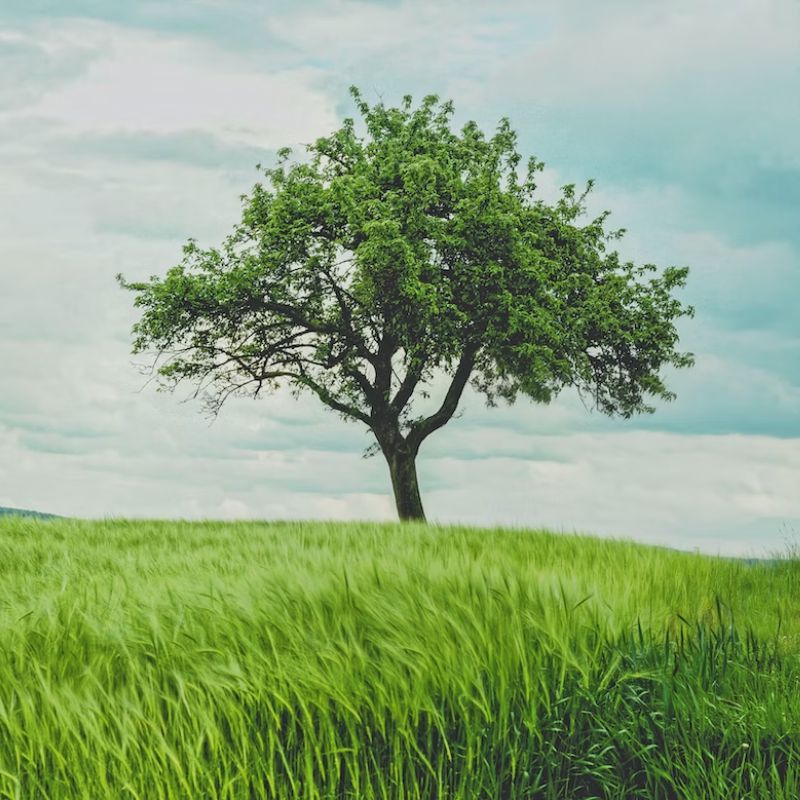Explore the Fascinating History of Massachusetts
Take our Massachusetts Trivia Quizzes for a Chance to Win a 6-Month Subscription to History By Mail!

The History of Massachusetts
Journey Through Massachusetts Trivia
Welcome to our Massachusetts history and trivia page, presented by History By Mail. Join us as we embark on a captivating journey through the rich past and cultural tapestry of the Bay State. From early Native American civilizations to European exploration and the modern era, we'll explore Massachusetts' hidden gems and challenge your knowledge with entertaining quizzes. Let's uncover the diverse history and intriguing trivia of Massachusetts together.
Massachusetts, known as the Bay State, is a land of extraordinary history and diverse landscapes. From the indigenous tribes who first inhabited the region, such as the Wampanoag, Nipmuc, and Massachusett, to the impact of European colonization and the establishment of settlements, Massachusetts holds a captivating legacy. From the bustling city of Boston to the charming coastal towns and scenic landscapes of Cape Cod and the Berkshires, the state showcases a blend of cultures, natural beauty, and a deep connection to its Native American and colonial roots.
Join us as we unravel the intriguing history and trivia of Massachusetts, delving into its pivotal role in American history, its contributions to education and literature, and the fascinating stories that make it a unique and cherished part of our nation's heritage.
Facts about Massachusetts
State Abbreviation: MA
Capital: Boston
Name Origin: Massachusetts’ name might come from the Massachusett tribe, whose name can be translated to “near the great hill” or “near the range of hills.” It refers to the Blue Hills, southwest of Boston.
Nickname: Bay State; Old Colony State
Statehood: February 6, 1788 (6th State)
State Motto: ”Ense petit placidam sub libertate quietem” (By the sword we seek peace, but peace only under liberty)
Massachusetts' Flag
The state flag of Massachusetts features a white field with a centered depiction of the state seal. The seal itself showcases a blue shield adorned with an image of an Algonquian Native American holding a bow and arrow, representing the indigenous people of the region. Above the shield is a blue ribbon displaying the state motto, "Ense Petit Placidam, Sub Libertate Quietem," which translates to "By the Sword We Seek Peace, But Peace Only Under Liberty."
The shield is supported by an arm holding a sword on the left side, symbolizing the state's willingness to defend its rights and liberties. On the right side, a disembodied arm extends from a cloud, representing the ideals of righteousness and justice. Above the shield and arms is a golden star, symbolizing Massachusetts' admission as the sixth state in the Union.
Massachusetts' Great Seal
The Great Seal of the State of Massachusetts is an emblem of historical significance and represents the values and heritage of the state. The seal features a circular design with a central image depicting an Algonquian Native American holding a bow and arrow, symbolizing the indigenous people who inhabited the region before European colonization.
Surrounding the central image is a blue band inscribed with the state motto, "Ense Petit Placidam, Sub Libertate Quietem," which translates to "By the Sword We Seek Peace, But Peace Only Under Liberty." This motto reflects Massachusetts' commitment to defending its principles and pursuing peace through the preservation of liberty.
The outer border of the seal bears the text "Sigillum Reipublicae Massachusettensis," which translates to "Seal of the Republic of Massachusetts." This inscription reinforces the state's status as a self-governing entity within the United States.
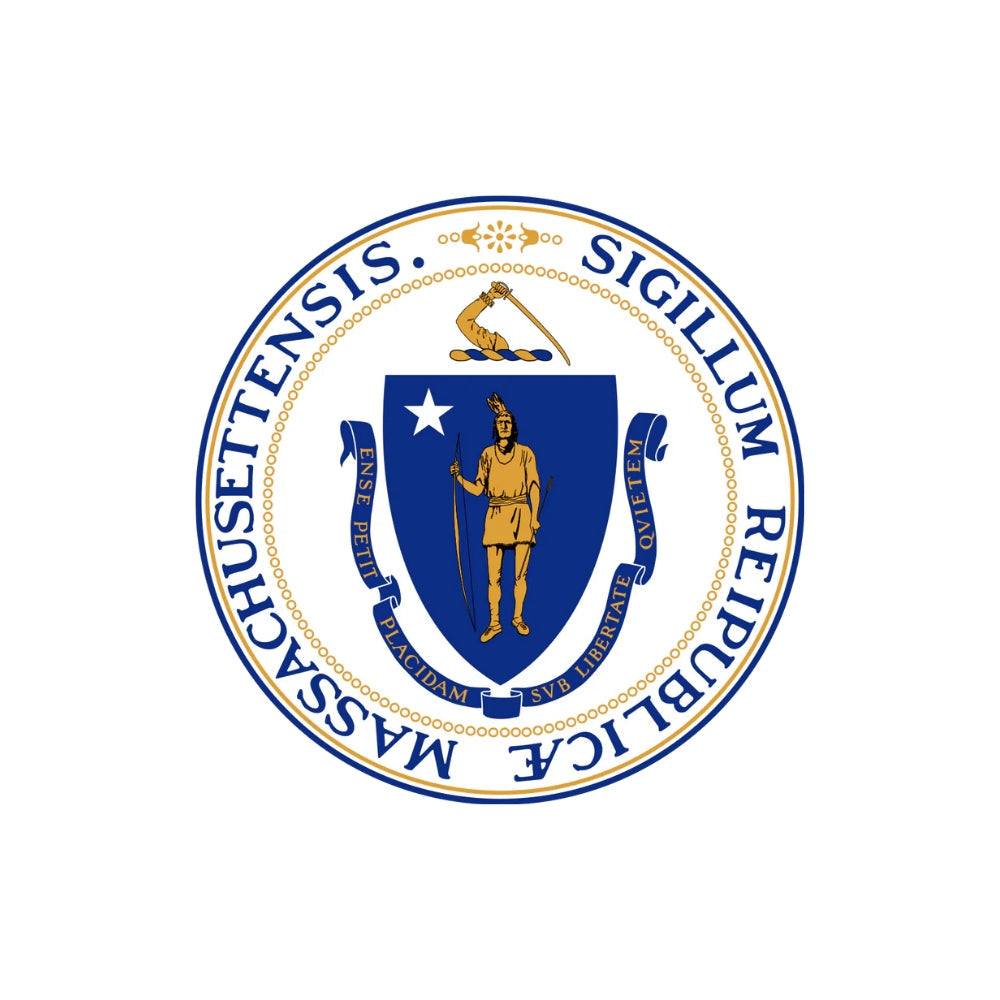
--- State Trivia #1 ---
History of Massachusetts
Massachusetts derives its name from the Massachusett people, one of the numerous Algonquian tribes that inhabited the region. While the Wampanoag Confederacy, the neighboring Native American group, holds greater prominence in United States history, the Massachusett people played a significant role as well. The Wampanoag Confederacy controlled a substantial portion of southern Massachusetts, including the majority of Cape Cod.
In 1620, the Pilgrims arrived in Massachusetts to establish the Plymouth Colony, seeking a sanctuary for their Puritan beliefs. Although they were not the first Europeans to reach Massachusetts—fishermen had already been active in the area, interacting with the locals—an important figure emerged from their arrival. Tisquantum, more commonly known as Squanto, had been kidnapped and taken to Europe as a slave. He managed to escape, learned English, and returned to his homeland. Squanto played a pivotal role in negotiating peace and trade between the English settlers and the Wampanoag.
Harvard University was founded in 1636, making it the oldest college in the United States.
The early colonists maintained an alliance with the Wampanoag for several decades, supporting each other in conflicts against other nations like the Pequot. Many Wampanoag individuals readily embraced Christianity and integrated into the colonies. Notably, the first Bible printed in the United States was an English-Wôpanâak Bible.
However, a group of Wampanoag became concerned about the growing colonies, fearing the gradual disappearance of their way of life. Metacomet, known to the English as King Philip, united several tribes against the colonies. In 1675, Metacomet declared war on the English, leading to a conflict in which several thousand Native Americans were killed across southern New England. Following this conflict, the colonists achieved near-complete control over the region.
The year 1692 marked a period of hysteria in the town of Salem, which became engulfed in a witchcraft frenzy, resulting in the infamous execution of 24 women accused of being witches. This event was one of several instances of religious persecution in the region, and disputes over religion also led to the persecution of Anne Hutchinson and the establishment of Rhode Island.
By the 1760s, Massachusetts had transformed into a hub of commerce and industry within the colonies. Boston had become the seat of leading intellectuals, many of whom strongly supported independence. Protests such as the Boston Tea Party eventually led to the British closing the port of Boston and assuming direct control over Massachusetts Bay. Consequently, the American Revolution began with the battles of Lexington and Concord on April 19, 1775. Notably, John Hancock, a native of Massachusetts and President of the Continental Congress, was the first person to sign the Declaration of Independence.
In 1777, the Springfield Armory was founded to store weapons for the American forces. This armory played a major role in advancing modern industry and was responsible for manufacturing iconic American firearms like the M1903, M1 Garand, and M14.
After the Revolution, the issue of slavery took center stage. Much of New England, including Massachusetts, strongly opposed slavery on religious and philosophical grounds. Unlike the plantation-based economies of the South, Northern economies did not heavily rely on slaveholding. This economic divide further deepened during the Industrial Revolution. Lowell, Massachusetts became the first industrial town, paving the way for Northern industrialization. Massachusetts was among the earliest states to abolish slavery and emerged as a prominent center of the abolitionist movement.
Massachusetts openly defied pro-slavery laws such as the Fugitive Slave Act of 1850 and voted overwhelmingly in support of abolitionists. When the South seceded over the election of Abraham Lincoln in 1861, Massachusetts provided significant support to the Union during the Civil War.
Around the same time, Massachusetts became a magnet for immigrants from Europe. The Irish community, in particular, formed the largest and most renowned immigrant group in the state. Boston's Irish culture developed its own distinct character, separate from the culture of Ireland itself.
Before and after the Civil War, Massachusetts gained renown for its writers, educators, and public intellectuals. The Boston Public Library, widely considered the first major public library in the United States, was established during this time and remains the third largest public library in the country today. In the 1880s, Boston experienced a surge in the establishment of colleges, museums, concert halls, and theaters, earning the city and state a national reputation for the arts.
Throughout the 20th century, Massachusetts continued to play a crucial role in the realms of arts and sciences. The state witnessed significant growth in its high technology sectors, with Greater Boston, particularly along Route 128, becoming second only to Silicon Valley in terms of tech investments.
In May 2004, Massachusetts became the first state in the nation to legalize same-sex marriage.
Among the numerous points of interest in Massachusetts are Old Sturbridge Village in Sturbridge, Minute Man National Historical Park located between Lexington and Concord, and Plimoth Plantation in Plymouth. In Boston, there are many historical landmarks worth visiting, including Old North Church, Old State House, Faneuil Hall, the USS Constitution, and the John F. Kennedy Library and Museum.
State Symbols
Fun Facts
- Boston cream pie—chocolate-iced white cake filled with custard—is the official state dessert. But it’s not the only famous Massachusetts goodie: Chocolate chip cookies were invented here!
- Paul Revere, Benjamin Franklin, John Adams, John Hancock, Susan B. Anthony, and Dr. Seuss (whose real name is Theodor Seuss Geisel) were all born in Massachusetts.
- You can visit Plymouth Rock, the boulder that’s said to be the exact spot where the Pilgrims stepped off the Mayflower. It’s less than half the size today as it was in the 1600s—tourists kept chipping off pieces!
- Boston’s Freedom Trail is a painted line through the city that leads history buffs to 16 official Revolutionary sites—including the Paul Revere House, where Revere lived at the time of his famous midnight ride.
- In the late 1600s about 20 people died because they were accused of witchcraft in a series of hearings called the Salem witch trials.
--- State Trivia #2 ---

Things To Do in Massachusetts
- Explore the Freedom Trail in Boston: Embark on a historical journey by walking the iconic Freedom Trail, a 2.5-mile long trail that takes you through 16 significant historical sites in Boston. Visit landmarks such as the Massachusetts State House, Paul Revere's House, and the Old North Church, and immerse yourself in the rich history of the American Revolution.
- Enjoy the Cape Cod National Seashore: Experience the natural beauty of Massachusetts by visiting the Cape Cod National Seashore. Stretching along 40 miles of pristine coastline, this protected area offers stunning beaches, picturesque dunes, and scenic walking trails. Take a swim, go hiking, or simply relax and soak in the tranquil atmosphere of this coastal gem.
- Visit the Museum of Fine Arts in Boston: Delve into the world of art at the Museum of Fine Arts (MFA) in Boston. With a vast collection spanning diverse cultures and time periods, the MFA offers a remarkable display of art, including ancient Egyptian artifacts, European masterpieces, and contemporary works. Explore the galleries, attend special exhibitions, and indulge in the beauty of artistic expression.
- Take a trip to Salem: Immerse yourself in the fascinating history of the Salem Witch Trials by visiting the city of Salem. Explore the Salem Witch Museum, where you can learn about the events that unfolded during the infamous trials. Visit the House of Seven Gables, a historic mansion made famous by Nathaniel Hawthorne's novel, and wander through the charming streets lined with unique boutiques and witch-themed attractions.
- Enjoy outdoor activities in the Berkshires: Head west to the picturesque Berkshires region, known for its stunning landscapes and vibrant arts scene. Hike along scenic trails in Mount Greylock State Reservation, the highest peak in Massachusetts. Attend a performance at the Tanglewood Music Center, the summer home of the Boston Symphony Orchestra. Explore the quaint towns of Stockbridge and Lenox, known for their charming New England ambiance, art galleries, and cultural events.
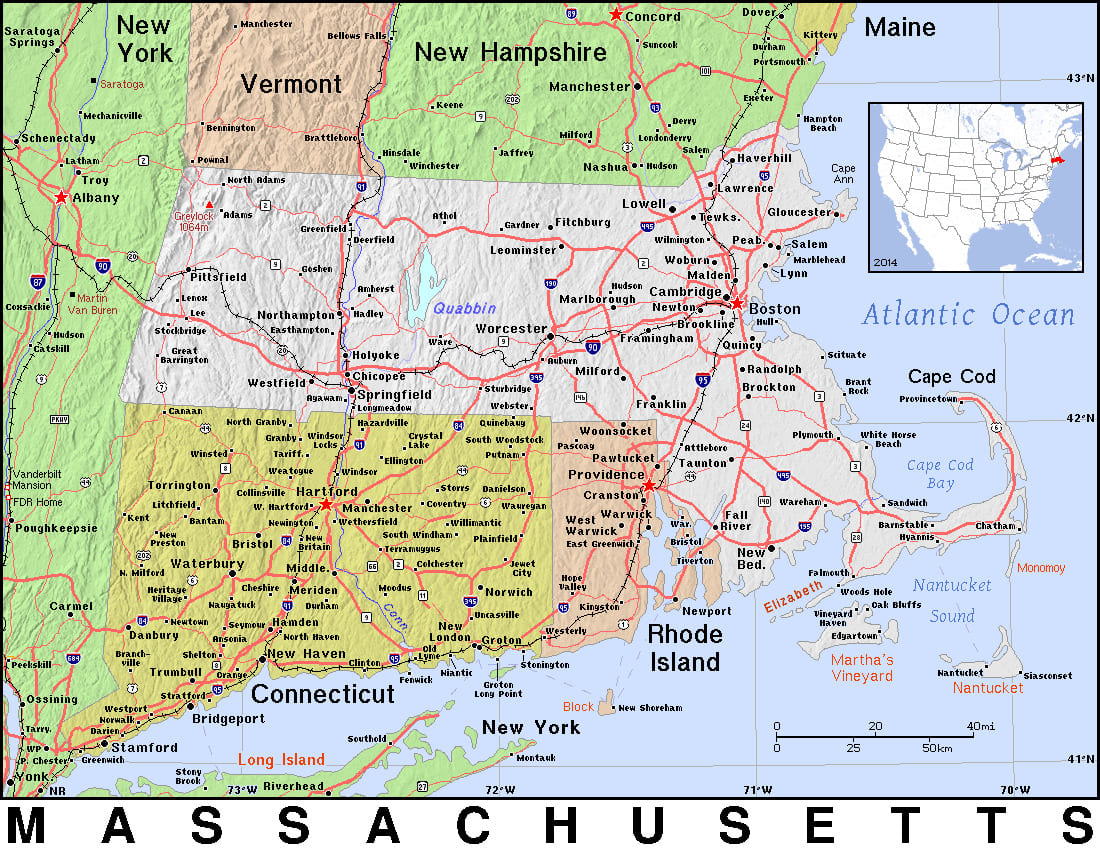
General Map of Massachusetts
Massachusetts, known as the "Bay State," is a captivating destination located in the New England region of the United States. Renowned for its historical significance, picturesque landscapes, and vibrant cities, Massachusetts offers a plethora of experiences for visitors to savor. From immersing yourself in the rich history of Boston, the state capital, to exploring the charming coastal towns of Cape Cod and Martha's Vineyard, Massachusetts beckons travelers to embark on an unforgettable adventure steeped in colonial heritage, natural wonders, and a thriving cultural scene.
Famous People From Massachusetts
--- State Trivia #3 ---
FREQUENTLY ASKED QUESTIONS (FAQ) ABOUT MASSACHUSETTS
Massachusetts became the sixth state to join the United States on February 6, 1788. Its rich history and contributions to the American Revolution make it an integral part of the nation's founding.
Besides Harvard University, Massachusetts established the first public school in the United States in 1635. This commitment to education has continued, making the state a leader in educational innovation.
The Boston Tea Party of 1773 was a protest against British taxation without representation. Colonists, disguised as Native Americans, dumped tea into Boston Harbor, symbolizing resistance against British oppression and laying the groundwork for revolutionary sentiment.
Massachusetts was pivotal in the women's suffrage movement. Activists like Lucy Stone and Susan B. Anthony worked tirelessly for women's rights, which culminated in the 19th Amendment granting women the right to vote.
Related Resources
- Official Website of the Commonwealth of Massachusetts: The official website provides information about the state government, services, tourism, business resources, and more. Visit: https://www.mass.gov/
- Massachusetts Office of Travel and Tourism: Explore Massachusetts' attractions, events, outdoor activities, and plan your visit to the state. Visit: https://www.massvacation.com/
- The Massachusetts Historical Society: Learn about Massachusetts' rich history, access archival collections, participate in research, and explore educational resources. Visit: https://www.masshist.org/
- Massachusetts Department of Conservation and Recreation: Discover Massachusetts' state parks, trails, recreational activities, and conservation efforts. Visit: https://www.mass.gov/orgs/department-of-conservation-recreation
- Freedom Trail Foundation: Plan your visit to the Freedom Trail in Boston, explore historical sites, and learn about guided tours and events. Visit: https://www.thefreedomtrail.org/
- Plimoth Patuxet Museums: Immerse yourself in the history of Plymouth and the Pilgrims at Plimoth Patuxet Museums, which include the Plimoth Patuxet Living Museum and the Mayflower II. Visit: https://www.plimoth.org/
- Boston Symphony Orchestra: Experience the world-class performances of the Boston Symphony Orchestra at Symphony Hall and Tanglewood Music Center. Visit: https://www.bso.org/
- Visit Salem: Discover the rich history, witchcraft heritage, and cultural attractions in Salem, Massachusetts. Visit: https://www.salem.org/
- Cape Cod National Seashore: Explore the stunning natural beauty of Cape Cod's beaches, dunes, and trails at the Cape Cod National Seashore. Visit: https://www.nps.gov/caco/index.htm

